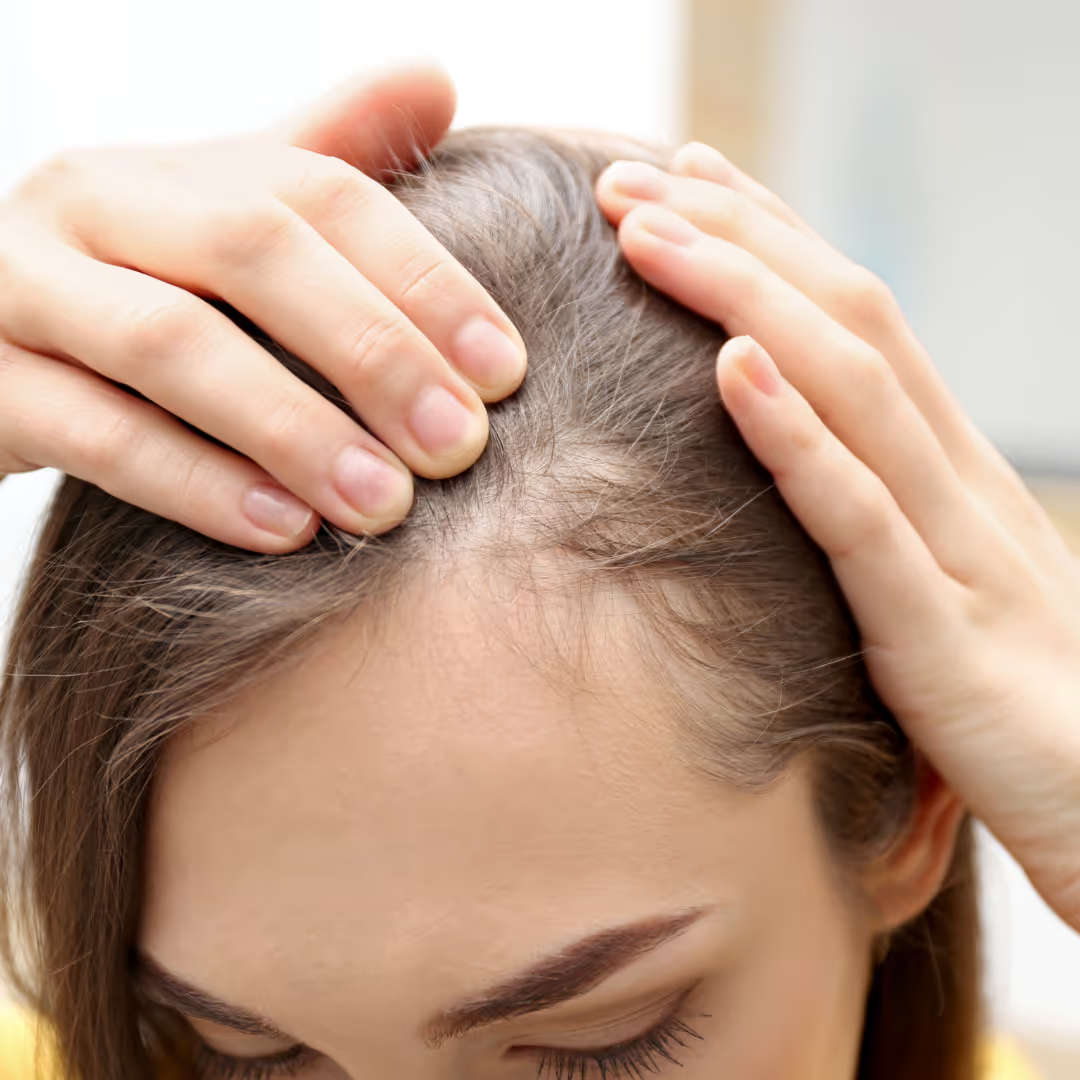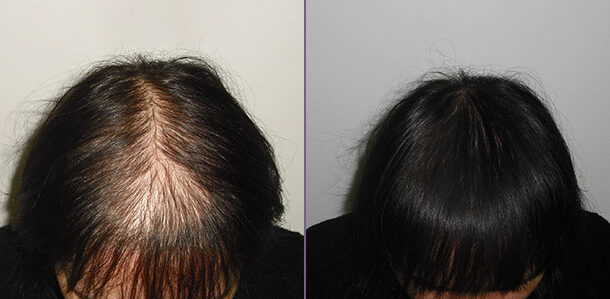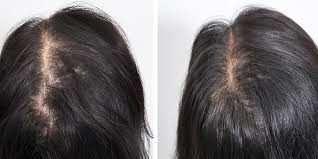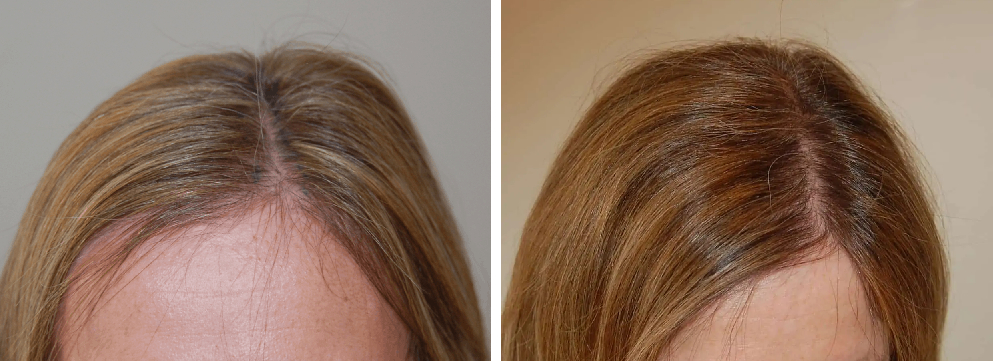Expert Hair Transplant For Women in Toronto
Frustrated by thinning hair that just won’t improve? You’re not alone! Dr. Cory Goldberg, a leading specialist in Toronto, offers advanced SmartGraft technology for a seamless, natural-looking transformation. With his expertise, you’re in safe hands every step of the way.
Get up to 10% off your hair restoration treatment
You deserve this!

What You Can Expect From Female Hair Transplant
Hair transplants for women are all about understanding the unique features of female hair loss. Unlike men, where hair tends to recede at the temples, women often experience a more diffuse thinning with a naturally rounded, downward-descending hairline. Plus, many women have a distinctive cowlick with angled back hair that needs special attention for a natural look.
You’re in expert hands with Dr. Cory Goldberg, a board-certified plastic surgeon recognized by the Royal College of Physicians and Surgeons of Canada. Using advanced SmartGraft technology, Dr. Goldberg’s approach is all about blending new growth seamlessly with your natural style—bringing fullness and shape back just as you envision.

What Causes Female Hair Loss?
Hair loss in women is often a complex issue, with many possible contributing factors. Here’s a closer look at some of the most common causes:
- Genetics: The leading cause for many women is inherited female pattern baldness, which gradually thins hair throughout the scalp. This type of hair loss can begin as early as your 20s or 30s, progressively impacting volume and density over time.
- Hormonal Imbalances: Hormones play a significant role in hair health, and shifts in levels—such as low thyroid hormones or iron deficiency—can weaken hair growth. Elevated testosterone levels, often associated with conditions like polycystic ovary syndrome (PCOS), can also lead to noticeable hair thinning.
- Pregnancy: Hormonal changes during and after pregnancy can trigger temporary hair shedding, a condition called telogen effluvium. While typically reversible, this hair loss can take several months to resolve as hormones rebalance.
- High Forehead Concerns: Women with higher foreheads may seek solutions to enhance facial proportions. Hair transplantation or surgical hairline lowering are effective options for creating a balanced look.

Am I a Candidate for a Hair Transplant?
Hair transplants can be a great option for women experiencing certain types of hair loss, but determining candidacy depends on a few important factors. Here’s what to consider when deciding if a hair transplant might be right for you:
- Type of Hair Loss: Women with specific hair loss patterns, such as thinning around the part line or localized areas of hair loss, are often good candidates. Diffuse thinning (hair loss across the entire scalp) may require a different approach since it reduces the availability of healthy donor hair.
- Stable Hair Loss: For optimal results, your hair loss should be stable, meaning it has slowed or stopped. This ensures that transplanted hair won’t be impacted by further hair loss, providing a longer-lasting solution.
- Sufficient Donor Hair: Successful transplants require sufficient healthy hair in a donor area, typically the back or sides of the scalp. Dr. Cory Goldberg can assess whether your hair density in these areas is suitable for a transplant.
Different Types of Female Hair Transplant
Female hair restoration can be achieved through several specialized techniques, each catering to different needs:
- Follicular Unit Extraction (FUE): This minimally invasive method extracts individual hair follicles from a donor area, like the back of the scalp, and transplants them to thinning areas or a high forehead. Using advanced tools like SmartGraft, FUE offers natural results with minimal scarring.
- Follicular Unit Transplantation (FUT): Also known as the “strip method,” FUT removes a strip of hair-bearing skin from the scalp, providing a larger number of grafts. This technique can suit women with broader hair loss needs, leaving a linear scar typically concealed by surrounding hair.
- Hairline Lowering/Forehead Reduction: Ideal for women with high foreheads, this procedure adjusts the hairline’s position and can be paired with transplants to enhance facial balance.
The Benefits of Female Hair Transplant Treatment
Improved Hair Density
By redistributing healthy hair follicles, a transplant can significantly increase volume and thickness, restoring areas affected by thinning or patchiness.
Natural-Looking Results
Advanced techniques like SmartGraft allow for precise placement, ensuring restored hair blends seamlessly with natural hair patterns and angles for a realistic appearance.
Minimal Downtime
Thanks to minimally invasive methods like FUE, most women experience a shorter recovery time and minimal scarring, allowing them to resume daily activities sooner.
Preparation of Female Hair Transplant
Consultation: Meet with Dr. Cory Goldberg to discuss goals and assess your hair pattern and donor area. This step customizes the treatment to your needs.
Medication Adjustments: Dr. Goldberg may recommend pausing certain medications for optimal healing. Follow his guidance before stopping any prescriptions.
Scalp and Hair Prep: Avoid harsh treatments like dyeing or straightening. On the day of the procedure, wash your scalp gently to remove any oils or styling products.
Aftercare of Female Hair Transplant
Minimal Contact: Avoid touching or washing the transplant area for a few days to let grafts settle securely.
Gentle Washing: Dr. Goldberg will advise when to start washing—usually within a few days. Use a mild shampoo and avoid direct water pressure.
Sun Protection: Shield your scalp from direct sunlight and heat. A loose-fitting hat can help.
Follow-Up: Attend follow-up visits to ensure proper healing and track progress.
Be Patient: Hair growth starts around 3-4 months, with full results appearing within 12 months. Proper aftercare encourages natural, lasting results.
The Process of Female Hair Transplant
Step 1: Every treatment begins with an in-depth consultation with Dr. Cory Goldberg. During this meeting, he’ll assess your hair loss pattern, scalp health, and donor hair availability to create a custom plan that suits your goals and maintains the natural shape of your hairline.
Step 2: Using advanced techniques like SmartGraft, Dr. Goldberg gently extracts individual hair follicles from the donor area—typically the back or sides of the scalp. This method ensures minimal discomfort and scarring while preserving healthy follicles for optimal results.
Step 3: Dr. Goldberg and his team carefully implant each follicle following your hair’s natural growth angles and unique hairline shape, which for women is often more rounded and lower. This precise placement ensures the results look completely natural and feminine.
Step 4: After the procedure, you’ll receive detailed aftercare instructions to promote healing and support new hair growth. Over the next several months, your hair will begin to grow naturally, with full results becoming visible around 12 months.
Before & After
98% CUSTOMER SATISFACTION


Customer Reviews
FAQ
Female hair transplants focus on different hair loss patterns and hairline shapes. Women usually have a rounded, descending hairline and may experience more diffuse thinning, so the procedure is customized to ensure a natural-looking result.
Female hair transplants are minimally invasive, especially with advanced techniques like SmartGraft. Most patients experience little discomfort during the procedure, and any post-treatment soreness usually subsides quickly.
A female hair transplant offers a permanent solution by using your own hair follicles, which continue to grow naturally in their new location. The results are long-lasting, with most women enjoying fuller hair for years to come.
Recovery is typically straightforward, with minimal discomfort. You’ll need to avoid washing your hair and touching the transplant area for a few days. Dr. Goldberg will provide detailed aftercare instructions to support your healing.
With SmartGraft technology, scarring is minimal. Small scars may occur in the donor area, but they’re generally well-hidden by surrounding hair.


.avif)











